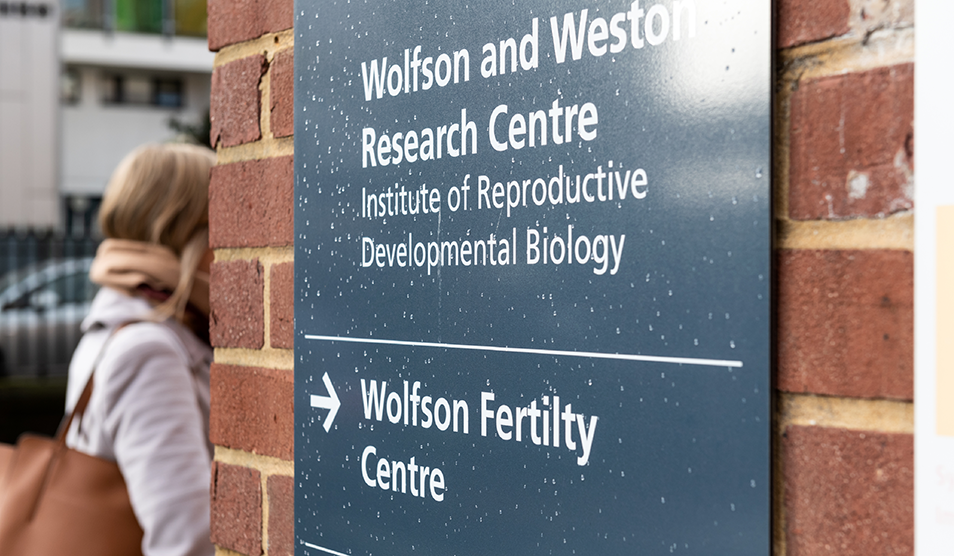HRH The Prince of Wales opens the Surgical Innovation Centre
A unique pop-up studio in London harnessing the power of design to transform approaches to key diseases in the NHS and prevent everyday healthcare problems, was unveiled today to His Royal Highness The Prince of Wales.
HRH The Prince of Wales visited the Health Innovation Exchange (HELIX) pop-up studio, located at St Mary’s Hospital, Paddington, before formally opening the Surgical Innovation Centre, a joint initiative of Imperial College London and Imperial College Healthcare NHS Trust.
The Surgical Innovation Centre is a world leader in solving healthcare problems, aiming to develop new techniques such as “scarless surgery” and training surgeons to spread their use in order to bring 21st century surgical care to NHS patients throughout the UK.
Professor the Lord Darzi of Denham, who brings together the activities of HELIX and the Surgical Innovation Centre through his role as Director of the Institute of Global Health Innovation at Imperial College London, said:
“We are delighted that HRH The Prince of Wales has visited the Surgical Innovation Centre. The NHS is under considerable pressure in meeting the challenge of shifting patient demographics, the burden of life style disease and financial constraints. Innovation through better technologies, processes and design can help address the challenges facing health care delivery globally. Surgery is one area which has thrived with innovation over the last two decades and the Surgical Innovation Centre will push these boundaries further
HELIX is a joint collaboration between the Royal College of Art and Imperial College London’s Institute of Global Health Innovation.
The HELIX pop-up studio, which opened this month (January 2015), is uniquely embedded within a public hospital. In its innovative working space, scientists, engineers, designers, policy makers and psychologists work together with doctors, nurses and patients to explore and co-develop new ideas into prototype products, processes and services.
In the studio HRH The Prince of Wales saw a smartphone app to encourage children with asthma to correctly monitor their condition and improve treatment compliance; a design intervention to improve patient cancer care; a design-led approach to improve uptake in bowel cancer screening; and a card game to promote physical activity. (See notes to editors for HELIX case studies).
At the heart of the Surgical Innovation Centre are two laparoscopic theatres for patients to benefit from the latest techniques in minimally invasive surgery such as robotics and image guidance surgery, and the first Da Vinci robotic programme in the UK, which aids surgeons in performing enhanced remote surgery. The Centre is the UK’s leading facility in bariatric surgery such as gastric bypass for morbid obesity. The Centre also specialises in scarless surgery for cancer. (See Notes to Editors for case studies of patients who benefited from surgery performed at the Centre).
HRH The Prince of Wales was introduced to staff who work in the Surgical Innovation Centre and patients who are undergoing treatment there.
Over the past year, nearly 2,000 patients have been treated in the Surgical Innovation Centre. As well as using innovative techniques to enable patients to be ready to go home sooner, the Centre also improves patient experience by providing consultation, diagnosis and treatment planning in the same place on the same day.
As part of Imperial College London’s Institute of Global Health Innovation, the Surgical Innovation Centre’s research programme directly benefits patients treated at Imperial College Healthcare NHS Trust and aim to influence best practice across the NHS.
Before formally opening the Surgical Innovation Centre, HRH The Prince of Wales visited two of its units which conduct cutting-edge research: The Hamlyn Centre for healthcare technology, which is an internationally recognised centre of excellence for medical robotics in the UK, and the Evelyn de Rothschild Clinical Skills Centre and Chitra Nirmal Sethia Technology and Training Hub.
Dr Paul Thompson, Co-Director of HELIX and Rector of the Royal College of Art, said:
“HELIX brings together design researchers and clinical staff to tackle the big demands today in healthcare. As with previous collaborations with Imperial College London, such as the redesign of the London NHS emergency ambulance, we know that real medical breakthroughs occur when people-centred design innovation and scientific rigour collide. It was wonderful to be able to showcase our work to His Royal Highness The Prince of Wales, particularly as his interest in healthcare is very much evidenced by his Patronage of many related charities and institutions.”
Professor Alice Gast, President of Imperial College London, added:
“Imperial College London collaborates with partners all over the world, and the HELIX is a wonderful example of our partnership with our closest neighbour, the Royal College of Art. We excel at collaborating across disciplines and the Surgical Innovation Centre is proof of the positive impact this work can have on the healthcare outcomes of its patients.”
Dr Tracey Batten, Chief Executive of Imperial College Healthcare NHS Trust, said:
“The Surgical Innovation Centre is a great example of innovation delivering rapid, practical benefits to patients through collaboration between the NHS and academia. We are working to ensure this approach becomes the norm across all of our services and beyond to our partners across north west London.”
The Surgical Innovation Centre is a unique surgical facility which embodies clinical excellence, translational research and education and training in one location. This is achieved through the shared mission of the Imperial College Academic Health Science Centre, a joint initiative of Imperial College London, rated one of the world’s best universities, and Imperial College Healthcare NHS Trust.
The Centre is based on four cutting edge research units which have received generous philanthropic contributions along with funding from the National Institute for Health Research:
-
The Hamlyn Centre for health care technology
-
The Wolfson Laboratory for robot assisted microsurgery
-
The Evelyn de Rothschild Clinical Skills Centre for undergraduate and postgraduate clinical skills training
-
The Sigrid Rausing Trust contributions towards the creation of the Centre for Health Policy
-
The Chitra Nirmal Sethia Technology & Training Hub for advanced clinical training in key-hole and robotic surgery.
CASE STUDIES
Bariatric surgery in the Surgical Innovation Centre
Gastric bypass surgery, a treatment for morbid obesity, reduces the size of the stomach to that of an egg and connects it to the small intestine. This changes chemical messengers from the intestines to the brain so that the patients feel less hungry, eat less and regain a healthy weight. It also helps conditions such as diabetes, sleep apnoea, high blood pressure, heart disease and high cholesterol.
One patient who has benefited from the bariatric surgery performed at the SIC is Allyson Frost. Mother of two Allyson, 46, underwent a gastric bypass in August 2014. Her surgery was performed by Mr. Sanjay Purkayastha, consultant general, laparoscopic and bariatric surgeon.
She said: “This is the best thing I’ve ever done. I finally have my life back. I have struggled with my weight since my teens - it’s always been up and down, then after the birth of my son, and the death of my mum, the weight just kept piling on. I had tried all of the diets available and while they worked for short periods of time the weight always crept back on. My doctor suggested that a gastric bypass was the best option for me. My operation went well and with the help of the staff, who really made me feel like an individual rather than a number, I was home within two days. Within five months I have hit my target weight, which I am so pleased about. Now I can play with my daughter on the floor without having to worry how I will get back up again. I cannot thank the staff at St Mary’s enough.”
Scarless cancer surgery at the Surgical Innovation Centre
Julia Lonsdale, 65, a nurse who trained and qualified at St Mary’s Hospital, was the first to have her bowel cancer operated on using Single Incision Laparoscopic Surgery (SILS) at the Centre. This technique means that the patient can have tumours removed from their bowel through a very small incision in the belly button, meaning there is no scar.
Julia said: “I was sent an NHS bowel cancer testing kit through the post just after my 62nd birthday. I sent off my sample and was asked to attend for a colonoscopy, which revealed a very small, cancerous polyp in my bowel.
“I was quickly offered the SILS operation to be performed by surgeon Mr Paraskeva at St Mary’s Hospital, which I found very reassuring. They removed the cancer through a tiny incision in my belly button. This avoided a large abdominal incision which reduced the risk of infection and meant it healed more quickly. I was able to go home after three nights with a very small dressing on my belly button, very little pain, a short recovery time, which was brilliant.”
HELIX Case studies
Ujinga: a game to combat childhood obesity
Problem: According to the London Health Commission, London has the highest rate of childhood obesity of any peer global city
Solution: HELIX has explored ways to promote physical activity amongst children through informal, low-cost, sociable and fun means. The team has created a card game where participants set each other physical challenges to be acted out and ultimately compete to win the game. The game is soon to be launched on crowd-funding sites.
Cancer Patient Experience: improving the experience of cancer patients
Problem: Upon diagnosis many cancer patients do not feel in control of the management and treatment of their illness
Solution: HELIX has designed simple solutions to improve patient cancer experience. One example is a printed brochure that helps patients understand the different elements involved in their individual care by providing information on their clinical team, the locations of their care, and what third party services such as charity support are available to them. This can also be used as a web or app based portal, establishing a digital connection between the patient and clinical teams.
Asthma Monitoring: encouraging compliance in peak flow monitoring and asthma management.
Problem: Children who have asthma use peak flow meters to measure how well they are breathing – crucial for effective asthma control – yet they often show low compliance in recording their peak flow readings.
Solution: HELIX has designed an app for smartphones that takes the difficulty out of recording peak flow readings and makes the task of taking a reading far more engaging. Through a series of challenges that have been turned into entertaining games, alongside other innovations, the smart phone automatically records the peak flow value. In doing so the app also acts as an accessible and easy to use asthma diary allowing the user to record their asthma attacks, helping to identify triggers.
Bowel Cancer Screening: improving uptake in the NHS Bowel Cancer Screening Programme.
Problem: Men and women aged between 60 and 74 are invited to participate in the Bowel Cancer screening programme every two years, but only around 55 per cent of invitees actually participate.
Solution: HELIX is working on improving the experience of bowel cancer screening. This includes a new ‘ready to use’ sample kit, designed to be both easy to use and understand. The sample kit also includes a series of animated films that explains in plain English the reasons for participating and practical advice on completing the task.
The Hamlyn Centre for healthcare technology is an international centre of excellence for medical robotics in the UK. It was established to push forward the integration of robotics into medicine and patient care, with the aim of developing advanced robotic technologies that will transform conventional key-hole surgery, develop new ways of empowering robots with human intelligence, and create revolutionary miniature “microbots” that have integrated sensing and imaging for cancer surgery and treatment.
The Evelyn de Rothschild Clinical Skills Centre and Chitra Nirmal Sethia Technology and Training Hub contains state of the art facilities designed to teach a range of healthcare professionals and students. Within a virtual reality laboratory and a number of design studios, workshop rooms and training environments users can develop safe skills within their chosen clinical discipline. The hub also actively supports a broad research agenda and the testing of patient safety, rehabilitative and surgical technologies in simulated and clinical environments.





